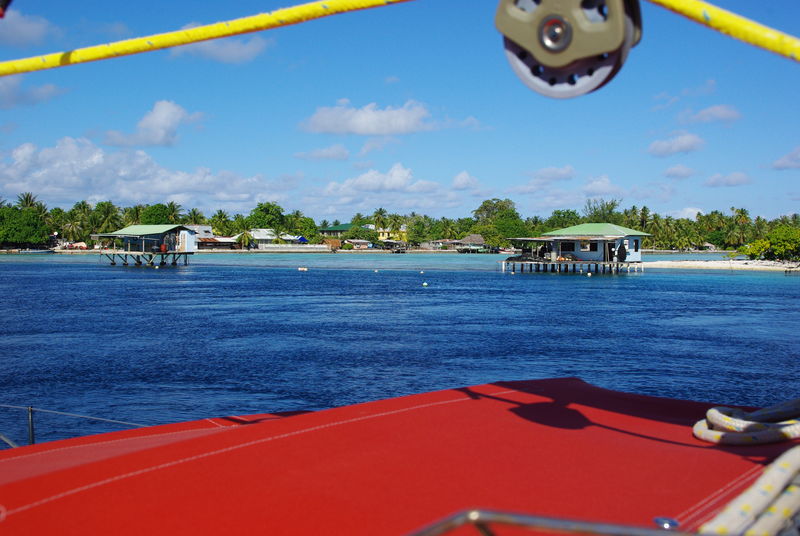

For example, passes located on the leeward side of an atoll may be cautiously attempted at the tail end of an outgoing tide (in other words, against the wind and a weak tide). Of course, there are a few exceptions to this rule.

After all, sailing is a game of patience. The best time to enter a pass is at slack tide, even if that means waiting. Avoid strong contrary tides-peaking at 5 knots or more in some passes-as well as strong wind-against-tide situations. Throughout the atolls, you must plan your entry and exit carefully and use the prevailing southeasterly winds to your advantage. Happily, the main passes into both Rangiroa and Fakarava are not only clearly marked, but extremely deep and wide as well. The first real challenge cruisers face is entering an atoll.

Nowadays, navigation to and among the atolls is generally straightforward. In pre-GPS days, sailors avoided the Tuamotus for fear that the slightest navigational error might put them high and dry on a reef. RUNNING THE PASSES Dodging coral heads on the way into the anchorage on Fakarava This atoll is the perfect second step along a natural progression through the archipelago. Next door to Fakarava is lovely Toau, population two. Fakarava, a centrally located atoll within the archipelago, calls for only a minor deviation off the direct line from the Marquesas to Tahiti, and is also a logical stopping point for sailors arriving via the less-traveled Gambier Islands. Others add in neighboring Ahe, which likewise promises a straightforward pass and easily accessible lagoon anchorage. For this reason, some make Rangiroa their one and only stop in the archipelago before continuing on to Tahiti. This atoll is so vast (the second-largest in the world) that you can build an entire cruising itinerary within its sea-like lagoon. Rangiroa lies on a direct line from the Marquesas to Tahiti and therefore makes a natural stopping point for many westbound sailors, especially those on a tight schedule. On the other hand, both offer relative safety and peace of mind, making for a balanced trade-off. Naturally, these user-friendly passes mean that Rangiroa and Fakarava are the atolls most impacted by outside influences in terms of both culture and environment. Each of these atolls feature wide, well-marked passes that even cruise ships can enter, with easy-to-follow channels inside. The two most-traveled gateways to the Tuamotus are Rangiroa, at the northwestern edge of the group, and Fakarava, at roughly the central point of the chain. Fresh water, provisions and fuel, on the other hand, are all hard to come by, so cruisers must be as self-sufficient as they would be for a long offshore passage. The only things abundantly available in these watery oases are coconuts, fish and pearls. Within each atoll is a relatively calm lagoon littered with unmarked coral heads. The sprawling archipelago’s 77 atolls are made up of large fringing reefs marked by a few tiny islets (motus) that barely rise above sea level. Ultimately, a brief sampler of the Tuamotus proves to be enough for some cruisers others move on to the greater challenges and rewards of atolls further off the beaten path. It’s a matter of piecing together an irregular puzzle of reefs, passes, anchoring techniques and weather patterns. That’s why we recommend that newcomers master the basics of atoll navigation at the most accessible, “tamer” Tuamotus first, and then graduate to more challenging atolls after gaining first-hand experience. So just how easy, or how dangerous, are the Tuamotus? You won’t know until you get there. For many, the Tuamotus represent a first encounter with narrow passes and coral-strewn lagoons where landmarks are practically non-existent and eyeball navigation is the name of the game. Although the wonders of GPS have “downgraded” the Tuamotus from their status as “the Dangerous Archipelago,” enough obstacles remain to give many cruisers misgivings-and rightly so.
ANSE AMIOT TOAU HOW TO
How to safely negotiate atolls of the South Pacific (published May 2013)īy now, every cruiser has certainly heard of the Tuamotus, a string of low-lying Pacific atolls straddling the central section of French Polynesia.


 0 kommentar(er)
0 kommentar(er)
